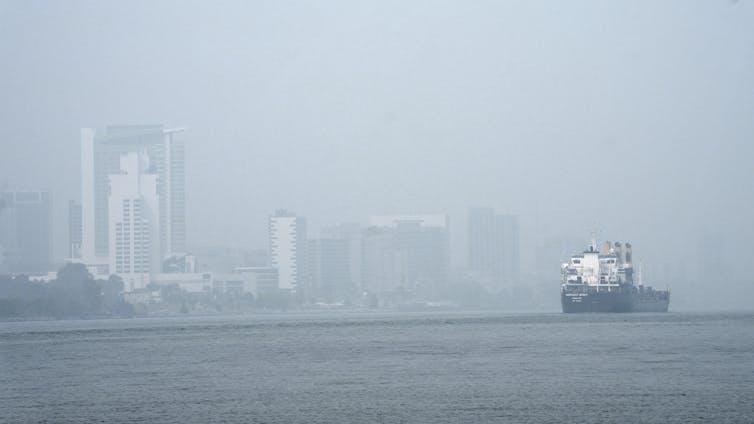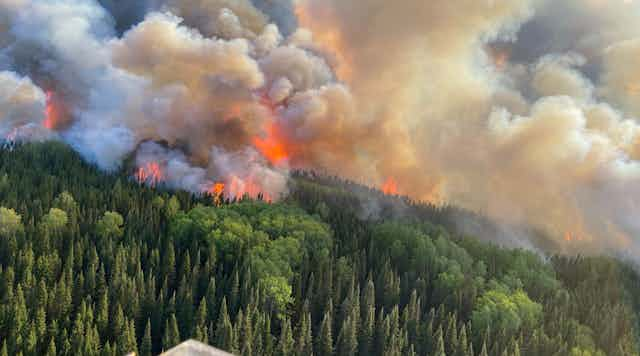On June 30, 2021, the town of Lytton in British Columbia was destroyed by an out-of-control wildfire. The aftermath saw a lot of anger and finger pointing, with all levels of government roundly criticized.
Three months later, Michael Mehta, lead author of a Thompson Rivers University study examining B.C.’s communications practices during the 2017 and 2018 wildfire seasons, said:
“When it comes to wildfire risk management and other disasters, we need to improve dramatically, right now, how we deal with things before they happen…The biggest issue…was how to put out credible, timely information that gave people the right tools to make decisions.”
Sadly, little has been done in the interim to remedy this. The focus of government programs has instead been to boost available physical resources, including aircraft and other equipment used to help control the intensity and spread of fires.
Today, both Canada and the United States are dealing with unprecedented levels of smoke from wildfires. And while forest management practices and climate change are partly to blame, so is the failure of governments to give people the right tools to make effective proactive crisis decisions.
A new approach to proactive crisis planning
Preparing for future crisis decisions is not a new idea. And it’s true that each event has distinct characteristics and many response decisions cannot be made until a crisis occurs. Yet it makes no sense to choose an action or make crisis decisions without specifying the problem being addressed or what matters the most.

Decision-makers often cite the broad range of effects as a challenge in responding to crises. But many of the trade-offs likely to arise when a crisis hits can be considered and prioritized in advance. For wildfires, these include balancing risks to local jobs and municipal revenues against other concerns such as biodiversity, Indigenous rights, smoke-related health risks and impacts on outdoor recreation.
Meeting these needs and untangling the mix of emotions and reason that arise while dealing with risks requires that the preparation for crisis response be focused on decisions as well as resources.
This can be done by clarifying three key elements: the decision statement, priority objectives and types of alternatives. Crisis response planning with these three factors in mind can help decision-makers quickly react to a specific crisis when it occurs.
The decision statement
Crisis responses often are based on vague statements, such as a desire to “build capacity,” “reduce property damage” or to “foster public support.” But such vague statements are open to interpretation and the various state and municipal responders can end up addressing different problems.
To avoid this, the problem should be framed by a specific decision statement. It can start with the word decide, followed by words such as what, when, how or where. Examples of such proactive decision statements include: “decide what services to restore in area X within the first 48 hours” or “decide how best to reduce human fatalities from the crisis over the next decade.”

A proactive decision statement provides the foundation to better understand the choices to be made, both in advance of and after occurrence of a crisis situation. And up-front agreement on the problem can save precious time when there is a need to respond quickly.
Clarifying objectives
Every crisis situation has multiple potential consequences. Clarifying which of them matter the most and can be affected by decision-makers makes it possible to define a small set of key concerns or objectives.
A powerful tool for generating these objectives is simply to ask “why is this important?” For an objective that specifies reducing the risk and severity of a future flood, the answer may be that proactive planning could reduce property losses, lower health risks and help maintain ecological diversity.
These responses often bring in social, cultural and mental health considerations, as well as the more obvious physical health or economic concerns. Yet decision-makers often skip the explicit identification of objectives, believing their selection is straightforward.
The COVID-19 pandemic policies in the U.S. are a good example. For about two years starting on March 15, 2020, the main policy objectives of the government were to minimize the number of COVID-19 cases and deaths and ensure hospitals could deal with the full range of serious medical problems.
Yet other consequences, including the reduced education of millions of students, loss of jobs and homes and increased deaths from alcohol and drug use, went largely unaddressed. A great deal of time, money and mental stress could have been avoided had these been identified early on as response objectives.
Generating alternatives
Identifying proactive decision statements and relevant objectives in advance creates a sound basis for generating potential response alternatives.
One way to do this is for decision-makers to first think about alternatives likely to perform well on each of the individual objectives, then on pairs of objectives and finally on other combinations. Combining desirable aspects of the already generated alternatives can result in innovative and better types of alternatives.
When a specific crisis occurs, having access to this information can quickly orient decision-makers to a more precise, situation-appropriate alternative rather than relying solely on intuition and prior experience.
Preparing for sound crisis decisions
Proactively structuring crisis decisions also increases the likelihood that the values and perceptions of all participants will be included. This integration of diverse perspectives both complements and guides decision-makers’ more intuitive responses.
Having a well-grounded foundational structure on hand will reduce the time required to adequately understand a specific crisis situation. It will also open up more time for dialogue, gathering information and implementing the most appropriate response.
And in a crisis, every minute matters. Anticipating the decisions to be made as part of a proactive crisis management plan could help save critical time, lives and money.

